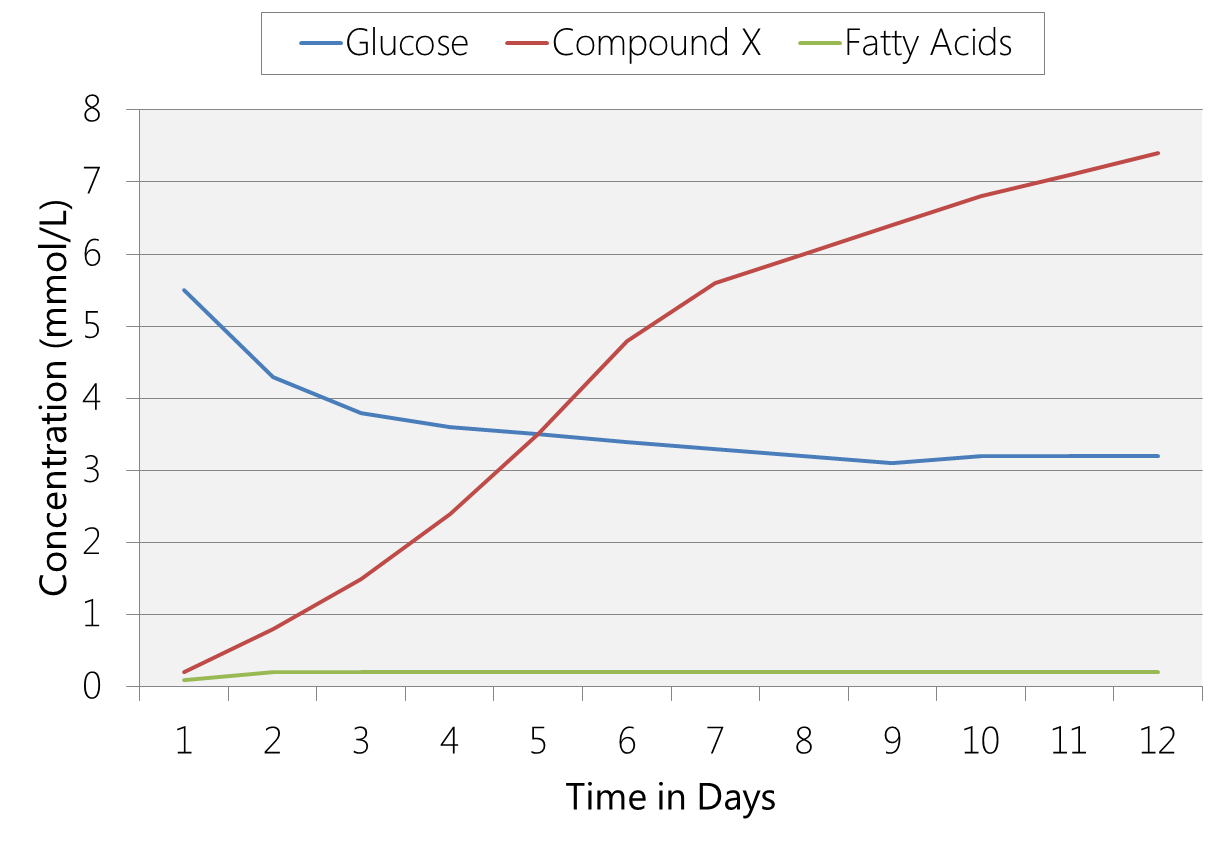WBR0799
Jump to navigation
Jump to search
| Author | [[PageAuthor::Yazan Daaboul, M.D. (Reviewed by Serge Korjian)]] |
|---|---|
| Exam Type | ExamType::USMLE Step 1 |
| Main Category | MainCategory::Biochemistry |
| Sub Category | SubCategory::General Principles |
| Prompt | [[Prompt::A researcher is studying the consumption of energy by brain cells in rats. During an overnight fast, the researcher notices that glucose delivery to the brain cells remains relatively constant. In contrast, during prolonged starvation, he observes that the consumption of another compound X by the brain cells increases, as shown in the image below. Which of the following compounds most likely corresponds to compound X? |
| Answer A | AnswerA::Beta-hydroxybutyrate |
| Answer A Explanation | AnswerAExp::Beta-hydroxybutyrate is a ketone body that is used by the brain during prolonged starvation. |
| Answer B | AnswerB::α-Linolenic acid |
| Answer B Explanation | AnswerBExp::Although Linolenic acid is a fatty acid that is utilized as an energy source elsewhere in the body, it does not cross the blood-brain barrier. |
| Answer C | AnswerC::Alpha-ketoglutarate |
| Answer C Explanation | AnswerCExp::Although alpha-ketoglutarate is a ketone derivatives of glutaric acid, it is not utilized as a primary energy source by the brain in times of starvation. It is a is a key intermediate in the Krebs cycle. |
| Answer D | AnswerD::Ornithine |
| Answer D Explanation | AnswerDExp::Ornithine is an amino acid that plays a major role in the urea cycle. It is not a primary source of fuel for the brain during starvation. |
| Answer E | AnswerE::Fructose |
| Answer E Explanation | AnswerEExp::Fructose is a simple monosaccharide that is often found bonded to glucose to form the disaccharide sucrose. It is not a primary source of fuel for the brain during starvation. |
| Right Answer | RightAnswer::A |
| Explanation | [[Explanation::The brain generally uses up to 70% of total body glucose requirements, and always requires a steady supply of energy producing substances for normal functioning. The experiment shows that upon starvation, brain cells decrease their consumption of glucose and and increase their consumption of ketone bodies instead. There are 2 main ketone bodies produced in states of starvation: Beta-hydroxybutyrate and acetoacetate. Acetoacetate levels rise following starvation, but they never reach concentrations as high as beta-hydroxybutyrate. An overnight fast in physiologic conditions, is not enough to drive the body to switch to ketotic metabolism. In the first 12-18 hours, glycogen stores kick in to maintain glucose levels at baseline. However, following prolonged starvation, glucose only represents less than 1/3 of the energy source of the brain. The brain's capacity to extract ketone bodies, as well as overall ketone body blood concentrations rise; these bodies become the main supply of nutrition to brain cells in such moments of stress. Although fatty acids can be utilized everywhere else in the body, they are not used by the brain because they do not cross the blood brain barrier. Educational Objective: Beta-hydroxybutyrate and acetoacetate are ketone bodies that are consumed by the brain in prolonged starvation. |
| Approved | Approved::Yes |
| Keyword | WBRKeyword::Ketone body, WBRKeyword::Acetone, WBRKeyword::Beta-hydroxybutyrate, WBRKeyword::Acetoacetate, WBRKeyword::Ketone bodies, WBRKeyword::Brain, WBRKeyword::Energy, WBRKeyword::Glucose |
| Linked Question | Linked:: |
| Order in Linked Questions | LinkedOrder:: |
